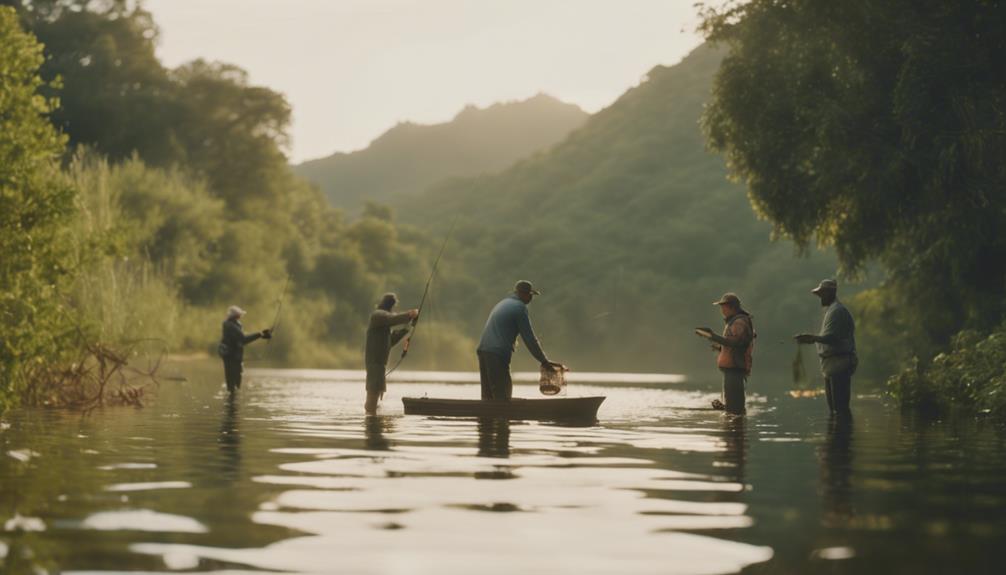What is Ascent Fly Fishing?
Ascent fly fishing is an innovative approach that emphasizes reaching higher elevations for optimal fishing experiences. This technique involves targeting freshwater species that thrive in mountain lakes, streams, and rivers. Anglers often seek out these elevated locations for their pristine waters and the opportunity to catch elusive fish like trout and grayling. By understanding the principles of ascent fly fishing, enthusiasts can enhance their skills and enjoy the serenity of nature while improving their catch rates.
Why Choose Ascent Fly Fishing?
There are several compelling reasons to embrace ascent fly fishing. First and foremost, the high-altitude environments typically boast less fishing pressure compared to more accessible waters. This means that fish are often more abundant and less wary of anglers. Additionally, fishing in these serene landscapes can be a refreshing escape from crowded lakes and rivers. The breathtaking views and the challenge of navigating rugged terrains only add to the allure of ascent fly fishing.
Essential Gear for Ascent Fly Fishing
To make the most of your ascent fly fishing adventures, having the right gear is crucial. Start with a lightweight fly rod and reel that are easy to carry on hikes. A rod between 3 to 5 weight is ideal for most high-altitude freshwater species. Don’t forget to pack a selection of flies that mimic local insect life; dry flies, nymphs, and streamers are all effective choices. Also, consider investing in a quality backpack to hold your gear, water, snacks, and a first-aid kit. Proper footwear is essential as well; durable, waterproof boots will help you navigate rocky terrains with ease.
Understanding High-Altitude Fishing Conditions
Ascent fly fishing presents unique challenges due to the high-altitude conditions. The weather can change rapidly, so it’s essential to be prepared for sun, rain, and even snow. Additionally, the decrease in atmospheric pressure can affect fish behavior; they may be more lethargic and require a different approach. Understanding the local climate and seasonal patterns will help you plan your trips accordingly. Pay attention to water temperature and flow, as these factors greatly influence fish activity.
Best Locations for Ascent Fly Fishing
When it comes to ascent fly fishing, location is key. Some of the best spots are found in national parks and protected wilderness areas. For example, places like Rocky Mountain National Park in Colorado and the Sierra Nevada mountains in California offer a variety of high-altitude lakes and streams teeming with fish. Researching local regulations and seasonal access to these areas can enhance your fishing experience. Additionally, exploring lesser-known trails can lead you to hidden gems where you can enjoy solitude and success.
Techniques to Master for Ascent Fly Fishing
Mastering ascent fly fishing techniques can significantly improve your success rate. Start with casting; practice your accuracy and distance to ensure you can reach fish hiding in challenging spots. Nymphing is particularly effective in high-altitude waters, as fish often feed on insects drifting underwater. Learning to read the water is also vital; look for ripples, currents, and eddies where fish are likely to hold. Don’t hesitate to experiment with different retrieval techniques until you find what works best for the conditions you’re facing.
The Importance of Conservation in Ascent Fly Fishing
Ascent fly fishing offers a unique opportunity to connect with nature, making it imperative for anglers to practice conservation. Always adhere to the “Leave No Trace” principles, ensuring that you leave your fishing spots cleaner than you found them. Be mindful of local wildlife and habitats; avoid trampling vegetation and nesting areas. Furthermore, consider practicing catch-and-release techniques to help maintain fish populations in these delicate ecosystems. Supporting local conservation efforts can also contribute to preserving these natural resources for future generations.
Joining the Ascent Fly Fishing Community
Engaging with the ascent fly fishing community can enhance your experience and knowledge. Consider joining local clubs or online forums where you can share experiences, tips, and techniques with fellow enthusiasts. Participating in organized outings or workshops can also expose you to new methods and locations. Social media platforms provide a great way to connect with other anglers, share your catches, and learn from their experiences. Building relationships within the community can lead to lifelong friendships and invaluable fishing opportunities.
Conclusion
Ascent fly fishing is an exciting and rewarding pursuit that combines the thrill of fishing with the beauty of high-altitude landscapes. By understanding the unique aspects of this technique, equipping yourself with the right gear, and practicing responsible fishing, you can create unforgettable memories in nature. Whether you’re a seasoned angler or a beginner, ascent fly fishing offers an enriching experience that connects you with the great outdoors. So pack your gear, choose a beautiful mountain destination, and prepare to cast your line into the clear waters of the ascent fly fishing world!
